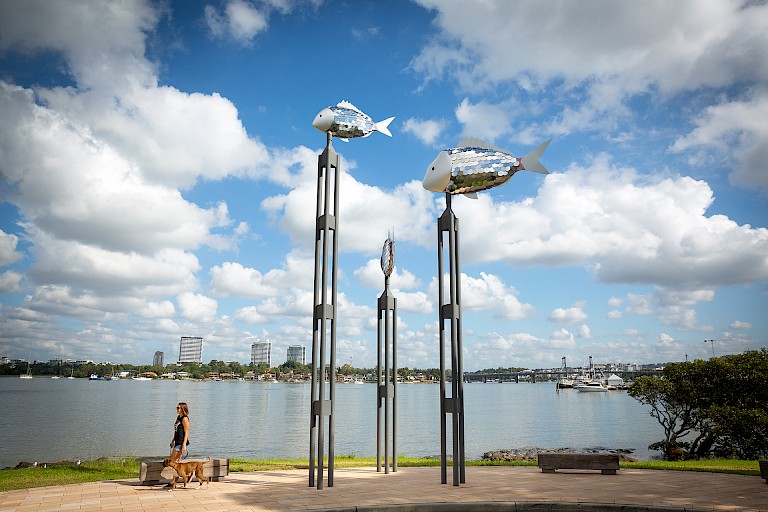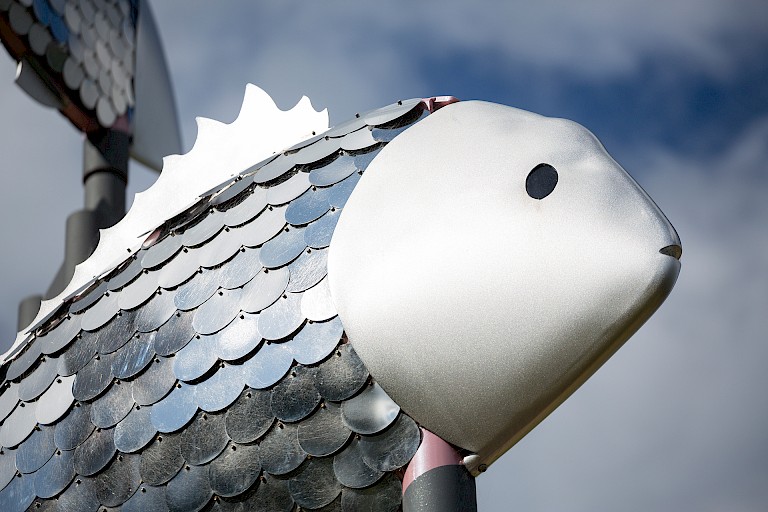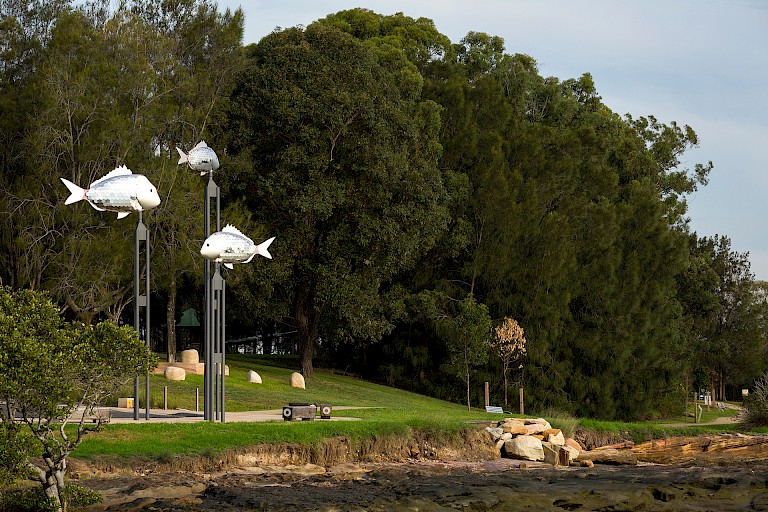



The use of the wallumai is derived from the Wallumedegal clan that inhabited this area. The artists drew from the Aboriginal engravings and drawings that simplify the characteristics of the snapper while still retaining its characteristic skeletal structure. The work represents the traditional totem of the area’s original inhabitants, the Wallumedegal people. It is likely that the clan’s name derives from the word “Wallumai” and “matta,” a word denoting a place. Those living on the southern side of the river, in what is now the Ryde area, were therefore the snapper fish clan. The river and its aquatic life not only sustained the Wallumedegal physically. It was intrinsic to their culture, identity, and way of life, and this is reflected in their adoption of the snapper as their cultural totem. As an artwork, Wallumai Wind Sculpture becomes a symbol of the local identity of Aboriginal people, their fishing practices and the rich marine life migrating and feeding here.
Aboriginal identity and consent is integral to this work and the larger context within which it sits. A public art team led by Milne and Stonehouse working with Tobin presented and discussed concepts with local Aboriginal groups before Ryde Council adopted the plan. The first realization of the plan was the Wallumai Wind Sculpture. This sculpture commences the overall aim of the Riverwalk to create a high quality public space along the foreshore through the installation of permanent contemporary art works that reflect the history, stories, and values of local Aboriginal communities. This is intended to create greater community awareness of Indigenous people, their custodianship of the land, and presence in the Ryde community.
All copyright belongs to Shanghai Academy of Fine Arts, Shanghai University.



